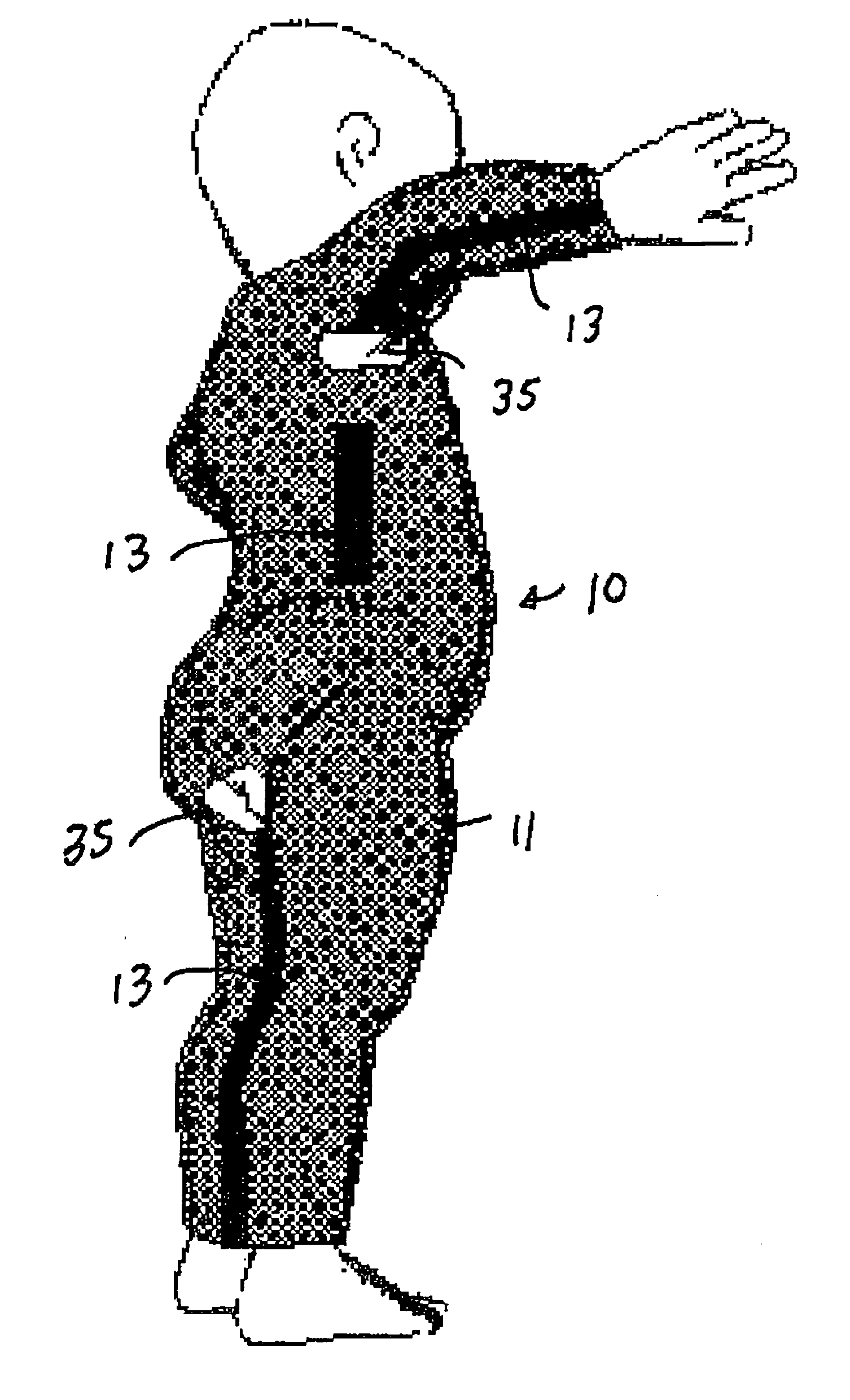Phototherapy garment
a technology for garments and phototherapy, applied in the field of garments, can solve the problems of increasing the cost of treatment, prolonging or restricting treatment, and reducing the effect of treatment effect, so as to head exposure, reduce the risk of eye damage, and reduce the effect of radiation therapy
- Summary
- Abstract
- Description
- Claims
- Application Information
AI Technical Summary
Benefits of technology
Problems solved by technology
Method used
Image
Examples
Embodiment Construction
[0025]With reference to FIGS. 1-5, the preferred embodiments of the present invention may be described.
[0026]As shown in FIGS. 1 and 2, the present invention includes a form-fitting bodysuit 10 for phototherapy having a shell 11 made from a stretchable, washable material, such as polyester / spandex, covering the arms, legs, and torso of the patient. The bodysuit 10 may have open areas 35, for example in the armpit or groin areas, for ventilation. With reference to FIG. 3, a layer of cross-woven side-glow optical fibers 12 which provides phototherapeutic light is disposed within the shell 11 of the bodysuit 10. Acrylic optical fibers available from 3M are suitable for the practice of the present invention. As shown in FIG. 1, the bodysuit 10 has adjustable fasteners 13 along the arms, legs, and torso of the patient to allow for variable sizing and a snug fit. With reference to FIG. 4, light is transmitted into the layer of cross-woven optical fibers 12 from light emitting diodes (“LED...
PUM
 Login to View More
Login to View More Abstract
Description
Claims
Application Information
 Login to View More
Login to View More - R&D
- Intellectual Property
- Life Sciences
- Materials
- Tech Scout
- Unparalleled Data Quality
- Higher Quality Content
- 60% Fewer Hallucinations
Browse by: Latest US Patents, China's latest patents, Technical Efficacy Thesaurus, Application Domain, Technology Topic, Popular Technical Reports.
© 2025 PatSnap. All rights reserved.Legal|Privacy policy|Modern Slavery Act Transparency Statement|Sitemap|About US| Contact US: help@patsnap.com



